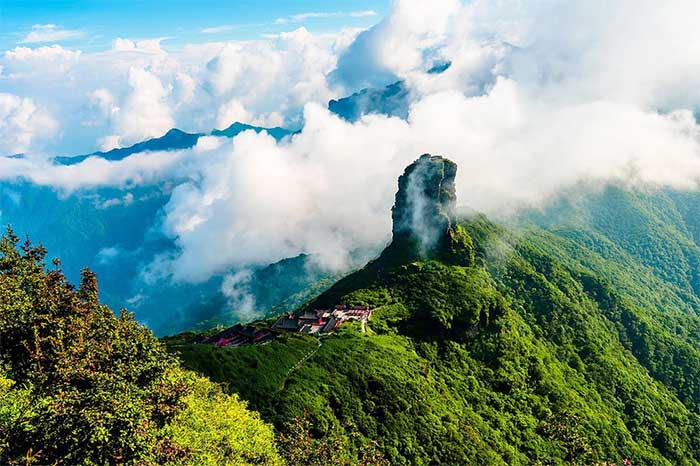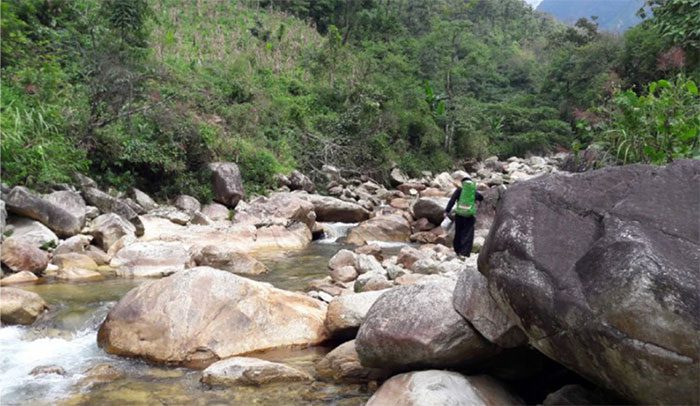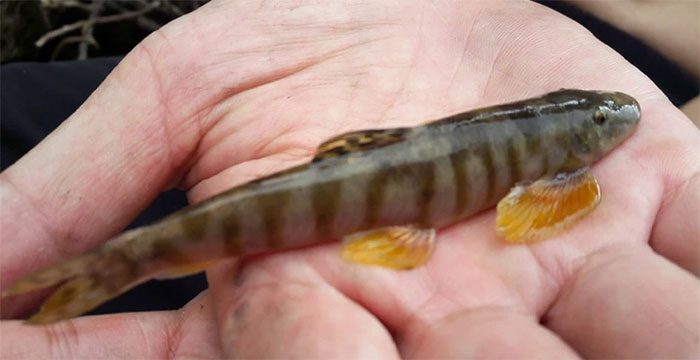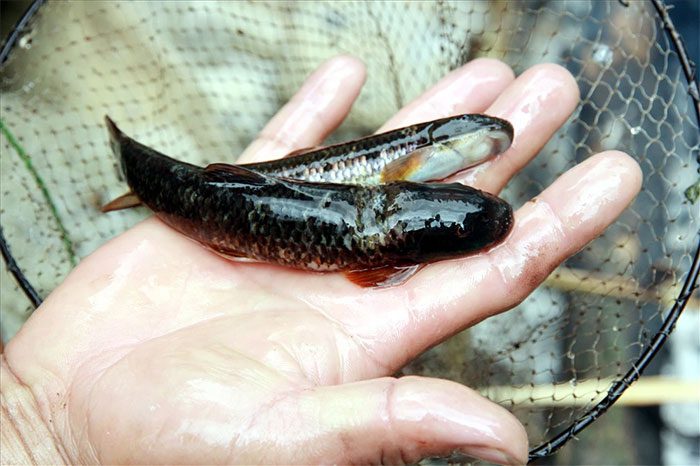They are a native fish species, very rare, and the locals liken them to “being as precious as ginseng.”
The Rare Fish Found Only in Hoàng Liên Sơn
Hoàng Liên Sơn is a mountain range known as the “roof of Indochina”, always a challenge for anyone wishing to conquer it. This pristine place is home to secrets that, once discovered, leave everyone in awe of the magnificent creations of nature.
Hoàng Liên Sơn is approximately 180 kilometers long, stretching from the Northwest to the Southeast, connecting the provinces of Lào Cai and Lai Châu, and extending to the western part of Yên Bái. This area is also inhabited by many rare animal and plant species that exist only here. The Bitter Fish is a unique species from this mountain range. According to Lao Động newspaper, in ancient times, streams flowed through the vast fields of golden moss, causing the water and moss to have a bitter taste, and there was a type of fish that consumed this moss and stream water, resulting in its bitter flesh. Since then, this fish has been called the Bitter Fish.

On the Hoàng Liên Sơn mountain range, there is a very special fish known as the Bitter Fish. (Image: Bình Phước Newspaper).
According to the 2012 IUCN Red List, the Bitter Fish is a genus of fish in the Balitoridae family, belonging to the Cypriniformes order, and it is a native genus of the eastern region of Asia. This fish only thrives in very high, cold, and even icy conditions. This species is extremely rare, only found at altitudes above 2000 meters, in cold waters year-round, and it requires a lot of experience to know where the Bitter Fish hides. Typically, they hide in areas with eddies and numerous caves, rocky crevices, and fast-flowing waters, occasionally seen with fish peeking out from the cliffs, only to be caught again.
According to An ninh Thủ đô, the Bitter Fish, also known as Ginseng Fish, lives in Sàng Mà Pho Stream, Sin Súi Hồ Commune, Phong Thổ District, Lai Châu Province. Additionally, they have been found in two other streams: Hoàng Chù Van and Chảng Phàng. They are a native species, very rare, and are regarded by the locals as “precious as gold,” “precious as ginseng.”

Sàng Mà Pho Stream, the habitat of the Bitter Fish. (Image: An ninh Thủ đô).
The Bitter Fish is about the size of a finger or slightly larger. Its back is shiny black, its belly is white, and its fins have red stripes, resembling goby fish.
VTC News describes the Bitter Fish as clinging to rocks to eat algae in fast-flowing, cold streams, hence the name rock-clinging fish. When the water is shallow and flows gently, the rock-clinging fish may emerge from their rock holes and get caught in nets, but the Bitter Fish, also known as “Ginseng Fish,” is rarely seen. This clever fish never ventures out of its rocky hole; it spends its entire life hidden in the dark crevices, never showing its head.

The Bitter Fish is a native, very rare fish, and the locals liken it to “being as precious as gold,” “as precious as ginseng.” (Image: An ninh Thủ đô)
For the locals, the Bitter Fish is one of the unique delicacies with an unforgettable flavor. The Bitter Fish resembles a miniature fried fish. The finger-sized fish, with a mix of red and black body and a white belly, is caught and then gutted, removing the insides, while the rock-clinging fish does not require gutting and can be skewered directly for grilling. The meat of the bitter fish has a unique taste; a fish as small as a finger has a flavor reminiscent of grouper.
When eaten, the bitterness of the fish quickly dissolves in the mouth, and just seconds later, a sweet citrus flavor spreads from the tip of the tongue down the throat, reminiscent of the precious taste of ginseng rather than fish. Biting into the fish reveals the refreshing bitterness of the flesh, but the sweetness soon mingles with saliva, lingering in the throat. The local people believe that only those very fortunate can enjoy this unique dish found in the Northwest.
A Fish That Can Only Be Caught by “Getting Drunk”
In the quest to hunt for the Bitter Fish in Hoàng Liên Sơn, An ninh Thủ đô reports that locals say: “You need a lot of experience to know where the Bitter Fish hides. They typically hide in areas with eddies and many caves, rocky crevices, and fast-flowing water.”
To catch the Bitter Fish, they must split into two groups to act, where “one group digs out small stones to redirect the flow. The other group builds a stone wall on the other side. When the stone wall rises above the stream surface, a tarp is laid down to block the fierce flow. This blocks the water, redirecting it to the other side. Consequently, the remaining half of the stream gradually dries up, revealing small pools of water.”

The Bitter Fish is very clever and hard to catch. (Image: Lao động).
Afterwards, the locals use stones to crush pieces of bark that are red like blood and release sap. They pour the crushed bark into the pools, and the sap quickly spreads throughout the gentle, flowing waters downstream. This type of tree sap is easy to find, easy to use, has low toxicity, so it does not lead to extinction, and it does not affect the health of those who consume the fish; when the water clears, the fish will revive. Just a short while later, the “drunk” Bitter Fish floats out of their rocky holes, bobbing on the water’s surface, making it easy for the locals to catch them.
Besides being used as food, the Bitter Fish is also regarded as “heavenly bounty,” ginseng, and is seen as a tonic. This is because the Bitter Fish in Hoàng Liên Sơn feeds on golden moss (a valuable medicinal plant) from this mountain range, giving its meat a bitter taste and being incredibly beneficial for health.
In traditional Chinese medicine, the Bitter Fish is neutral, non-toxic, and helps to invigorate blood circulation, strengthen vitality, reduce heat, quench thirst, and treat internal heat…

To catch this fish, a type of tree sap that is red like blood is needed. (Image: VTC News)
In modern medicine, the Bitter Fish provides many types of vitamins that help detoxify the blood, boost vitality, and improve health. Additionally, this fish provides a lot of calcium, strengthening bones.
According to An ninh Thủ đô, the population of this species is currently declining severely due to overfishing and changes in the flow of the stream where they reside.
It is hoped that in the future, the local people will be aware of the need to conserve the Bitter Fish of Hoàng Liên Sơn so that they do not fall into the brink of extinction like other species.




















































